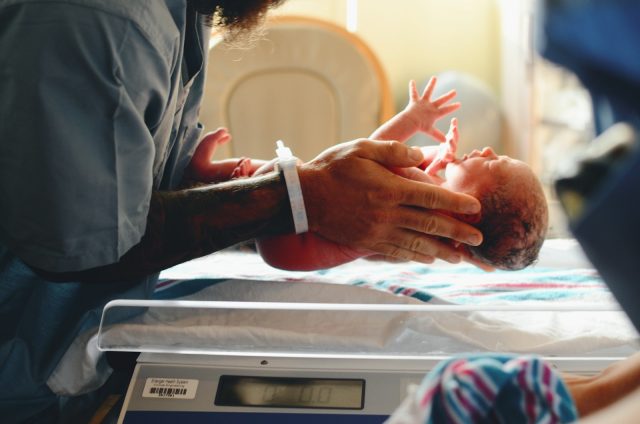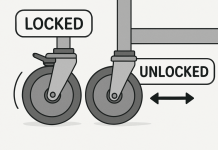
The birth of a child should be one of life’s most joyful milestones. It’s a moment you look forward to with anticipation and hope. But not every delivery goes as planned. Sometimes, mistakes during labor and delivery lead to devastating injuries that impact not only the child but also the entire family.
When errors occur, the consequences can last a lifetime. To better protect yourself and your baby, it’s important to understand the most common birth injuries, how they happen, and what signs you should watch for.
1. Cerebral Palsy
Cerebral palsy is one of the most serious birth injuries and often results from brain damage sustained during labor or delivery. This condition can be linked to oxygen deprivation, improper use of delivery tools, or failure to act quickly when complications arise.
If your baby experiences reduced oxygen flow to the brain, even for a few minutes, the damage can be permanent. It shows up in the form of muscle control, motor skills, and posture, and in severe cases, it can limit a child’s ability to walk, talk, or live independently.
Symptoms may not appear right away. You might notice delays in reaching developmental milestones, unusual muscle stiffness, or poor coordination. But, regardless of the symptoms, early diagnosis and therapy can make a difference.
2. Brachial Plexus Injuries
The brachial plexus is a network of nerves that controls movement and sensation in the shoulder, arm, and hand. Injuries to this area often happen during a difficult delivery, particularly when the baby’s shoulder gets stuck after the head has emerged – a condition known as shoulder dystocia.
If too much force is applied to free the baby, the delicate nerves can stretch or tear. This injury may result in Erb’s palsy, where the arm hangs limp and mobility is limited. While some babies recover with physical therapy, severe cases may require surgery and leave lasting impairment.
As a parent, you might notice your newborn isn’t moving one arm as much as the other, or that they have trouble gripping with their hand on the affected side. Immediate medical evaluation is key to begin treatment as early as possible.
3. Fractures
Bone fractures are another common birth injury, with the collarbone being the most frequently broken bone during delivery. These injuries can occur when the baby’s shoulders have difficulty passing through the birth canal or when excessive force is used during delivery.
While fractures usually heal with time and immobilization, they are still painful for both the baby and parents. In some cases, a fracture may also point to a larger issue with the delivery process or the decisions made by the medical team.
You may notice swelling, crying when the affected area is touched, or limited movement of an arm. Fortunately, most fractures heal well, but the fact that they happened at all may raise questions about whether the delivery was managed properly.
4. Oxygen Deprivation
Oxygen deprivation during labor and delivery – medically known as hypoxic-ischemic encephalopathy (HIE) – can cause severe, lasting damage. This occurs when the baby doesn’t receive enough oxygen to the brain and other organs. Causes may include umbilical cord complications, prolonged labor, or delayed emergency intervention.
The effects of oxygen deprivation can be catastrophic, leading to developmental delays, seizures, or lifelong cognitive impairment. In some cases, HIE can even be fatal.
Signs of oxygen deprivation may appear shortly after birth. A baby may have trouble breathing, appear floppy, or require resuscitation. As the child grows, developmental challenges may become more apparent.
5. Facial Nerve Injuries
During a difficult delivery, especially when forceps or vacuum extractors are used, a baby’s facial nerves can be damaged. This type of injury may cause one side of the baby’s face to droop, making it difficult to close the eye or move facial muscles.
While some cases improve with time, severe nerve damage may require surgical intervention. In the meantime, your child may struggle with feeding, eye protection, or even social challenges as they grow.
Parents often notice these injuries right after birth, especially if one side of the baby’s face looks different when crying or moving. Though recovery is possible, the emotional and physical toll of such an injury can be quite significant.
What You Can Do as a Parent
As Marzella & Associates explains, “The birth of a newborn should be one of your happiest occasions in life. Unfortunately, babies and birth mothers can suffer injuries during the birthing process or pregnancy, due to errors made by medical staff.”
If your baby suffers from one of these injuries, you may feel overwhelmed, angry, and unsure of what to do next. The most important thing is to seek immediate medical evaluation to understand the extent of the injury and the available treatment options. Early intervention – whether physical therapy, surgery, or medication – can make a meaningful difference in your child’s development and quality of life.
You should also consider the possibility that the injury was preventable. Many birth injuries happen because medical staff fail to monitor fetal distress, delay emergency C-sections, or misuse delivery tools. If negligence played a role, you may be entitled to pursue legal action to cover medical costs, therapy, and the long-term care your child may need.
Working with an attorney who specializes in birth injury cases ensures your family has a strong advocate. They can review medical records, consult experts, and help determine whether malpractice occurred.
While nothing can erase the pain of a birth injury, knowing your options can give you a sense of control. Whether through medical treatment or legal action, you have the power to fight for your child’s well-being and your family’s future.



